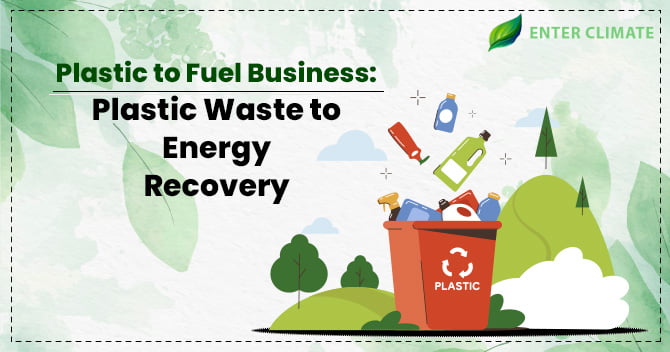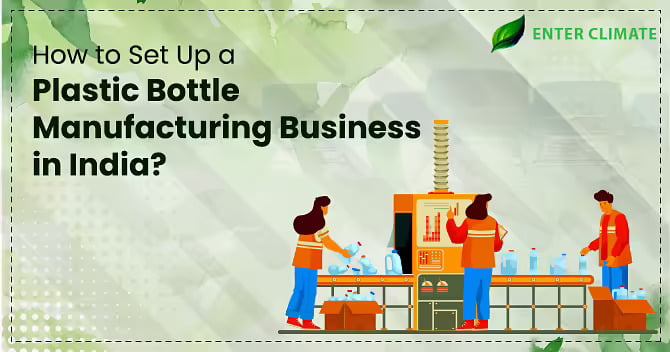Overview of Plastic Packaging Regulations under EPR Category 1: Rigid Packaging Plastic
 22 Aug, 2023
22 Aug, 2023 
The PWM Rules define Plastic Packaging as packaging material made using plastics for preserving, protecting, transporting, and storing products in various ways. Today, plastic packaging has become an integral part of everybody’s daily life with the numerous benefit it brings to the table. However, some grave issues related to its waste management arose along with the convenience it provided – piling heaps of non-degradable plastic choking our waterbodies, degrading our landfills and polluting our oceans. Rigid plastic, a category of plastic, is widely used for packaging food and beverages. Depending on the material, the rigid plastic packaging market is segregated into polyethylene (PET), polypropylene (PP), high-density polyethylene (HDPE), and others. The CPCB defines rigid plastic packaging in the EPR Guidelines of 2022, where it has been identified as highly recyclable and placed under EPR Category 1. Packaging made of rigid plastic is used in the packaging of water soda bottles, beverages and food. Rigid plastic also finds usage in the packaging of household items, pharmaceuticals and personal care products.
Once plastic packaging is discarded after its end-of-life, it is known as plastic waste. It is a fact that petroleum-based plastics have remained on the landscape for many centuries years. However, there is a silver lining to this, plastic waste is recyclable, and the article will present an overview of a widely used and recyclable plastic, i.e. rigid plastic. Apart from this overview, the article will outline the EPR guidelines applicable to PIBO as per the PWM Rules 2016, which have stipulated mandatory category-based recycling targets, including EPR Category 1 target values.
Understanding legalities under EPR Category 1 with respect to PIBOs
If we look at India’s plastic packaging industry, polyethene, a type of rigid plastic, dominates among the packaging material due to its associated benefits, such as its low cost, robustness, and enhanced chemical resistance. Polyethene terephthalate (PET), the most widely used resin being popular as packaging material, falls under category one plastic and holds the largest share regarding recyclability among the four categories. Therefore, understanding the legalities concerning Category 1 plastic becomes crucial for Producers, Importers and Brand Owners (PIBO) towards understanding the EPR Category 1 regulations that govern their products’ packaging and EPR obligations. Owing to the rise in food packaging in the forms of jars, bottles, and containers and the beverage industry, the discard rate of this plastic has also increased, and the food & beverage segment is mainly responsible. As per CPCB, the following categorisation is used for plastic packaging commodities.
| EPR Category 1 | Plastic Category |
| Category-I | Rigid plastic packaging |
| Category-II | Flexible plastic packaging |
| Category-III | Multi-layered plastic packaging |
| Category-IV | Compostable plastics |
The demarcation into EPR Category 1 has been done by CPCB, considering the plasticity and recyclability of monomers that constitute rigid plastic. The recyclability categorisation, therefore, follows the principle of highly recyclable Plastics called thermoplastics, including PET, HDPE, LDPE, PP, PVC, PS, etc. The other category is the non-recyclable plastics, also known as thermoset plastic which becomes irreversibly rigid when heated and therefore cannot be remoulded into another desired shape. This category can include Multilayer & Laminated Plastics, PUF, Bakelite, Polycarbonate, Melamine, Nylon etc. Also, as per the BIS Codification notified in Rule 8 (b) of the Plastic Waste (Amendment) Rules, 2011, there are seven categories of plastics, i.e. PET, HDPE, PVC, LDPE, PP, PS and others.
Segments where Rigid Plastic Packaging is being widely used
Rigid plastic has a broad range of applications in films, wrapping materials, shopping and garbage bags, fluid containers, clothing, toys, household and industrial products, and building materials. The rigid packaging plastic market is segmented into material, production process, end-user industry, and region. EPR Category 1 guidelines also mandated the implementation of EPR on plastic packaging through a centralised online portal developed by CPCB to ensure ease of doing business while complying with applicable statutory obligations. The following segments are known for using this plastic packaging category in high volumes.
| Importers | Producer (manufacturers, brand owners) |
| Businesses that import Plastic packaging products or Products with plastic packaging, Carry bags, Multi-layered packaging, Plastic sheets etc. | These include businesses manufacturing or importing carry bags or multi-layered packaging (MLP) or plastic sheets and industries or individuals using plastic sheets or like or covers made of plastic sheets or MLP for packaging or wrapping the commodity. |
Need for awareness among PIBOs about EPR Category 1 Plastic Packaging
Today, Indian consumers are changing the way they buy and consume items that use plastic packaging. The increasing impetus towards adopting sustainability and the number of awareness schemes has not only informed citizens of their responsibility toward the environment[1] but also forced PIBOs to rethink their packaging preferences. especially in case of food and beverages industry. Today a shopper also looks for recyclability of the product packaging and prefers the more sustainable option in an effort to reduce the amount of trash being generated.
As recycling of a Category 1 plastic material can be done many times. Rigid plastics can be recycled between one and 10 times depending on the plastic. But in many cases the plastic can only be recycled for a limited time due to the quality of the plastic decreasing every time it is recycled because after every recycling, the monomers deteriorates due to thermal pressure and life span is, thus reduced.
EPR Category 1 Plastic
With the PWM Amendment Rules 2022, new guidelines were laid down for the PIBOs to discourage the use of single-use plastic and to promote a circular economy. One of them was to obtain Authorisation under PWM for effectively managing plastic waste. In case the PIBO uses plastic packaging, they will need to apply for EPR Authorisation under the PWM Rules, 2016.
EPR Obligations for PIBOs that use rigid Plastic packaging with their products
The EPR guidelines of 2022 has stipulated mandatory targets on EPR, recycling of packaging waste, reuse of rigid plastic and use of recycled plastic . The rules also mandated implementation of EPR guidelines on plastic packaging through a centralised online portal in order to ensure EODB while complying with statutory obligations.
Obligation for use of recycled plastic content under EPR Category 1
The Importer will need to ensure the use of recycled plastic in plastic packaging category-wise as given below.
| Plastic packaging category | 2025-26 | 2026-27 | 2027-28 | 2028-29 and onwards |
| Category 1 | 30 | 40 | 50 | 60 |
Obligation for reuse under EPR Category 1
The Brand Owner using Category I (rigid) plastic packaging for their products will have minimum obligation to reuse such packaging provided that the reuse of Category I rigid plastic packaging in food contact applications must be subject to FSSAI regulation. The minimum obligation to reuse for Category I is shown in the following tables
| Year | Target (as percentage of Category I rigid plastic packaging in products sold annually) |
| 2025 – 26 | 10 |
| 2026 – 27 | 15 |
| 2027-28 | 20 |
| 2028-29 and onwards | 25 |
Table 1: rigid plastic packaging with volume or weight equal or more than 0.9 liter or kg but less than 4.9 litres or kg
| Year | Target (as % of Category I rigid plastic in products packaging sold annually) |
| 2025 – 26 | 70 |
| 2026 – 27 | 75 |
| 2027-28 | 80 |
| 2028-29 and onwards | 85 |
Table 2: Category I rigid plastic with volume of weight equal or more than 4.9 lt or kg
Obligation for recycling under EPR Category 1
The Brand Owner are obligated to ensure a minimum level of recycling that doesnot include end of life disposal of packaging waste collected under EPR target, category-wise, as given below.
| category | 2025 – 26 | 2026 – 27 | 2027-28 | 2027-28 and onwards |
| Category I | 50 | 60 | 70 | 80 |
Documents needed for EPR Authorisation for Waste Management Business
The documents required to obtain EPR Authorisation are
- Sale proof if PIBO conducts sale in more than two states
- ERP Plan providing necessary details
- Copy of permission from concerned Department for selling the product
- Copies of agreement with collection centres
- Copies of agreement with dealers
- Copies of agreement with Treatment, Storage, and Disposal Facilities (TSDFs) (in case of CEEW5)
Conclusion
If you are a business that introduces a product in plastic packaging, in the market in the four plastic categories (rigid, flexible, multi-layered or compostable plastic), you will need to register for EPR and fulfil your recycling targets generated by the portal. The EPR targets will be based on the weight of plastic packaging used by the entity. You can collaborate with registered recyclers / co-processors/ and PWPs who can recycle proportionate plastic waste on your behalf, or you can purchase EPR certificates from plastic recyclers and PWPs. PIBOs which are operational in one or two states/UTs are also required to register with the concerned SPCB/PCC. In case of EPR registration, you will need a copy of the valid consent certificate, the Company’s PAN, CIN & GST (the combined copies of GST invoices in all the States/UTs where the PIBO is operating). authorised person’s PAN & Aadhar, details of the quantities of plastic packaging etc. It is therefore recommended that PIBOs using rigid plastic packaging under EPR Category 1 seek assistance of EPR and Compliance experts to fulfil their obligations and post-compliances without fail and save themselves from hefty environmental compensations.
FAQs
Category 1 type of plastic waste mainly consists of Rigid plastic, a category of plastic that is widely used for food and beverages packaging. This rigid plastic packaging market constitutes popular plastic types like polyethylene (PET), polypropylene (PP), high-density polyethylene (HDPE), and others.
Type 1 plastic is mainly rigid plastic packaging that includes popular plastic types like polyethylene (PET), polypropylene (PP), high-density polyethylene (HDPE), and others.
Category 1 Plastic includes rigid plastic while category 2 plastic includes Flexible Packaging Plastic
Category-I includes Rigid plastic packaging
Category-II includes Flexible plastic packaging
Category-III includes Multi-layered plastic packaging
Category-IV includes Compostable plastics
Plastic Packaging materials are categorised into the following 4 groups i.e. Category 1 (Rigid plastic), category 2 (Flexible plastic), category 3 (Multi-layered plastic) and category 4 (Compostable plastics)
The EPR Guidelines mandated implementation of EPR obligations on users of plastic packaging through a centralised CPCB portal, in order to ensure ease of doing business while complying with statutory obligations
The rigid plastic packaging market is divided into material, production process, end-user industry, and region. EPR Category 1 guidelines also mandated implementation of EPR on plastic packaging through a centralised online portal in to ease of doing business and comply with statutory obligations
The EPR guidelines of 2022 has stipulated mandatory targets on EPR for PIBOs along with recycling of plastic packaging waste, reuse of rigid and recycled plastic content in manufacturing process













